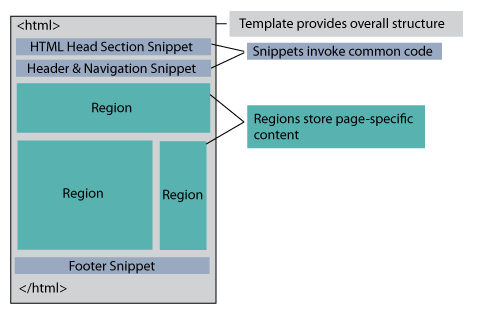Content Management System
Contents
The Webvanta content management system (CMS) makes it easy to create database-backed web sites. You’re completely relieved of all back-end programming and hosting, and you have the flexibility to make your site look exactly how you want. The CMS integrates with the database system to simplify the design and automation of arbitrary numbers of database-driven pages.
Instead of creating an individual file for each page, as in a typical web site, with Webvanta you add pages, upload files, and choose options all through your web browser. All the software resides on Webvanta’s servers.
With the Webvanta system, you can easily define your site’s pages, style them to look exactly how you want, and include page-specific content in modules that any authorized user can easily edit in-place.
Page Components

When you create a page in the CMS, you specify the page’s metadata (title, keywords, and description), it’s URL, and what template it uses. This information, which varies from one page to another, is stored in the CMS database.
Templates
The template is an HTML file, typically with a little bit of special Webvanta code embedded in it to access the database and provide other special functions, that provides the overall structure for the page. You can have as many templates as you want, but you need only a single template if all the pages of the site follow the same design. Templates generally do not have any page-specific information, but instead provide the framework that is common to all pages of a type.
Each template typically references one or more CSS files, and it may reference JavaScript files as well.
Your initial site has some default Webvanta templates installed. You can modify these to meet your needs, or provide your own.
Regions
A template can be a self-contained page, but to take full advantage of the CMS the template should not include the core page content, but only the standard, surrounding elements. A template can define any number of regions into which content can be placed. A region is typically a column, but it can also be a horizontal area.
All page-specific content goes in the regions. The contents of a region can be edited by any logged-in admin user by simply hovering over the region, in place on the actual web page, and clicking the Edit button in the top left corner. You can also edit regions from within the Control Panel by going to Pages, clicking on the page you want to edit, and then accessing the regions through the tabbed area; there will be one tab for each region.
See Using Templates to Define Page Structure and Using Regions for Page-Specific Content for more details.
Snippets
Chunks of code or text that you may want to reuse in multiple place is best saved as a snippet. You can put any text or code you want in a snippet, and then you simply invoke it by name in a template file (or elsewhere). In our standard templates, we use snippets for the html head section, the visual header and navigation bar, and footer. This makes it easy to have multiple templates, all using these same components.
WebvantaScript
You can use any standard HTML and JavaScript code in a region or in a template.
In addition, the Webvanta system has its own code, which we call WebvantaScript, that extends the HTML language and enables you to access the database and other features from within your pages. Webvanta Script can be used in templates, regions, and snippets.
See Using WebvantaScript for more information.
